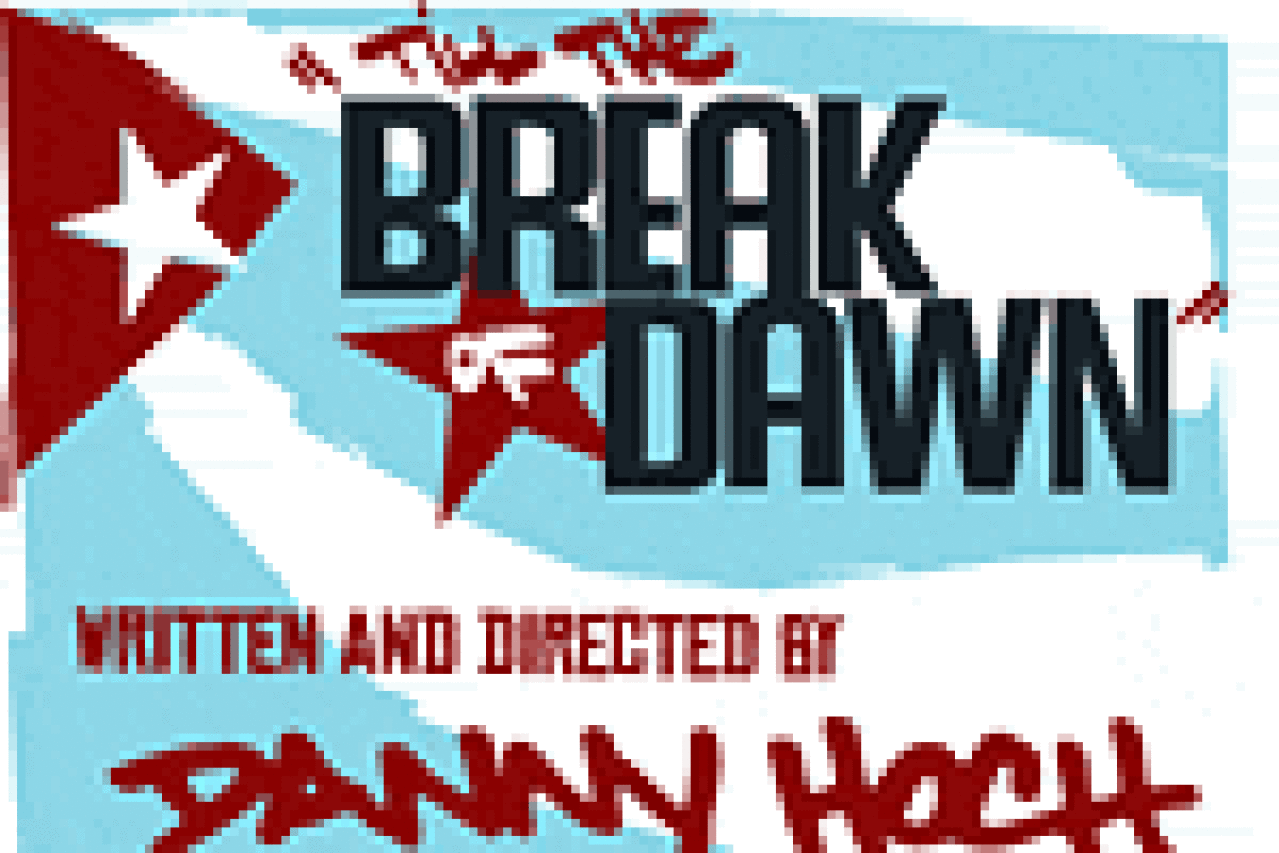Till The Break of Dawn

and Jaymes Jorsling in Till the Break of Dawn
(© Carol Rosegg)
Danny Hoch’sTill The Break of Dawn, now being presented by The Culture Project at the Abrons Arts Center, tackles head-on the complexities and contradictions of hip-hop culture and its intersections with issues of race, commerce, and social activism. While the show, which is directed by Hoch, is admirably ambitious, it is also too sprawling to be completely effective.
Set during the late summer and early fall of 2001, the play centers around a group of friends who travel from New York to Cuba to attend an international hip-hop festival. The trip is organized by Gibran (Jaymes Jorsling), an African-American Internet activist, who invites along his grad school buddy Robert (Johnny Sanchez) and his girlfriend Rebeca (Maribel Lizardo), childhood friends Big Miff (Dominic Colon) and Hector (Flaco Navaja), Hector’s girl Nancy (pattydukes), and Adam (Matthew-Lee Erlbach), who runs a small record label and is the only white person in the group.
Once in Cuba, the New Yorkers also encounter expatriates Dana (Gwendolen Hardwick) and Bobby (Jimmie James), who fled the U.S. for very different reasons, Cuban native Felito (Luis Vega), and French tourist Toulouse (Bambadjan Bamba). With this many characters, there also comes nearly as many subplots including — but not limited to — relationship problems between Robert and Rebeca, racial tension between Hector and Adam, and a generational divide between Gibran and Dana. The inevitable (given the year) inclusion of the September 11th terrorist attacks adds even more dramatic tension, as well as seeming like something of a deus ex machina that forces the characters to come together after several rifts had torn them apart.
Yet, packed within all this is a nuanced examination of hip-hop that spills out from the interpersonal conflicts of this diverse array of characters. Who gets to make a buck, who exploits or is exploited, who has permission to use the “n” word and in what context, and who has the technological access or higher education to even participate in some of these discussions is all addressed with both humor and insight.
The ideals and limits of activism are also explored. Dana’s former incarceration for alleged violent crimes done in the service of progressive causes is contrasted with Gibron’s completely different model of creating online networks for communities of color. In addition, Hector’s idolization of Cuban revolutionaries and his initial exultant reaction to the news of the World Trade Center attack are uncomfortable reminders that one man’s terrorism is another’s revolution.
Hoch is best known for his solo performances such as Some People and Jails, Hospitals, & Hip-Hop, in which he crosses race and gender lines to deliver nuanced portraits of a wide diversity of characters. Perhaps not so surprisingly, Till the Break of Dawn is full of monologues.
Erlbach delivers a speech upon Adam’s first entrance that had the audience at the performance I attended busting with laughter and applauding at its end. However, the remainder of the cast isn’t as adept at bringing the lengthy passages to life.
Indeed, the performances are wildly uneven, with Jorsling, Erlbach, Colon, and Navaja as the clear stand-outs; meanwhile, the most mediocre work comes from Lizardo, Sanchez, and James.
Additionally, Hoch proves a better writer than a director. Much of the blocking is static and uninteresting, and the pacing of the two-hour-and-twenty-minute play drags on numerous occasions. The play demonstrates so much potential that it seems such a shame that it is also so imperfectly realized.











